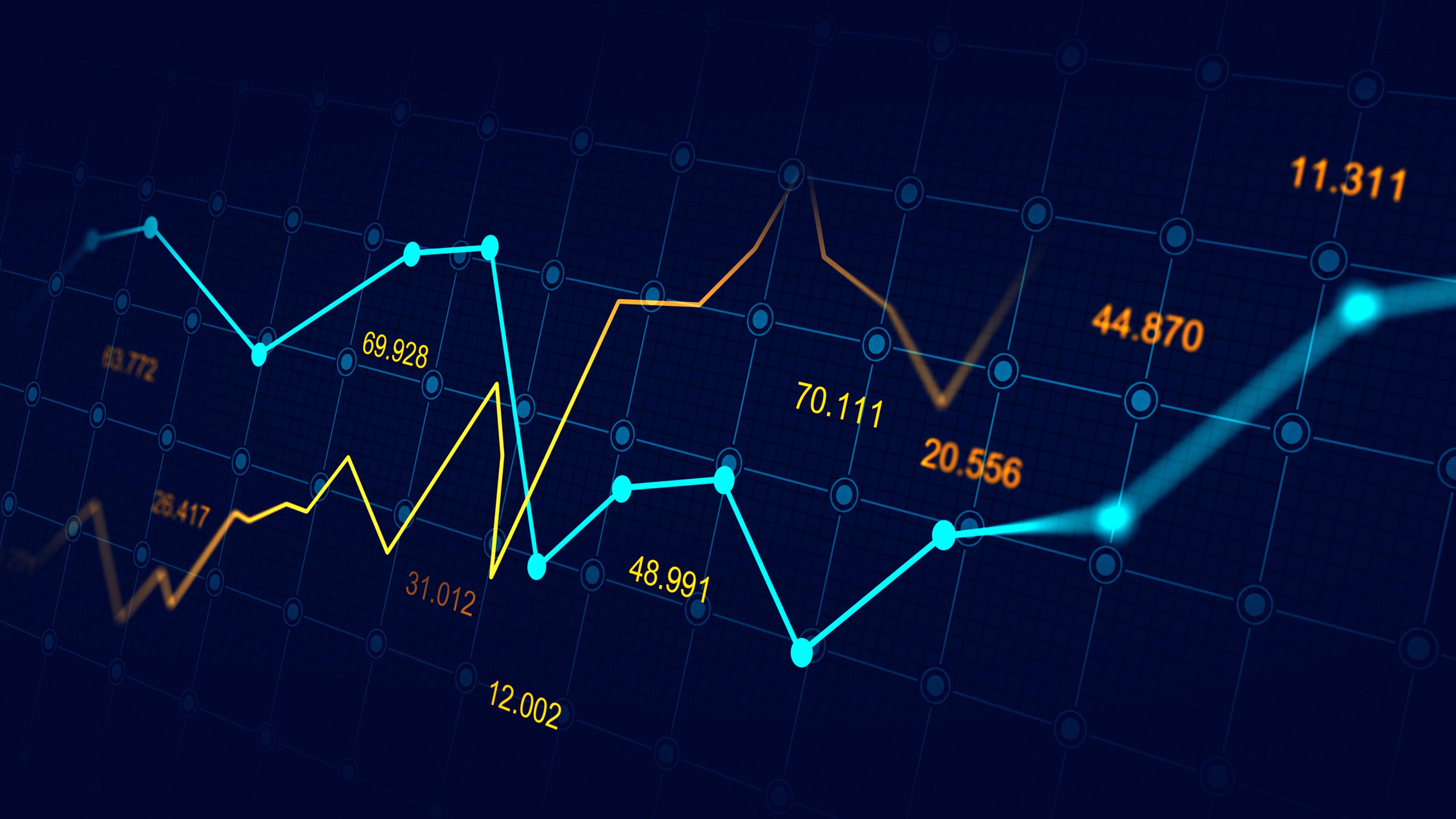The Awkward Relationship Between Markets and the Economy
Why is the stock market doing so well during such a rough time? Well, it’s because the stock market and the economy are not the same thing.


In March 2020, COVID-19 began to ravage the United States, putting the nation into lockdown and skyrocketing unemployment.
Entering a bear market for the first time in 11 years, stocks plummeted by 30% on March 23, a substantial drop from its record in February. But while the stock market and the economy were both declining, troubles for the markets were short-lived. The 33-day bear market, spanning from Feb. 19 to March 23, soon rebounded. In fact, the S&P 500 soared 40% in the 50 days following its March 23 low.
Despite the presence of many indicators (e.g., rising unemployment, businesses closing left and right, etc.) that the economy is crumbling, stocks are staying relatively strong. There are a number of reasons this phenomenon can occur. The stock market and the economy have a fascinating relationship; the two are not one and the same.
From just $107.88 $24.99 for Kiplinger Personal Finance
Become a smarter, better informed investor. Subscribe from just $107.88 $24.99, plus get up to 4 Special Issues

Sign up for Kiplinger’s Free Newsletters
Profit and prosper with the best of expert advice on investing, taxes, retirement, personal finance and more - straight to your e-mail.
Profit and prosper with the best of expert advice - straight to your e-mail.
Current Economic Climate
Unemployment levels shot up to 14.7% in April, the highest recorded since the Great Depression. The rise of unemployment, currently at 13.3% as of May, may be even more telling of the state of the economy: disaster around every corner. Yet, the stock market doesn’t seem to reflect that.
In fact, despite the (hopefully) temporary shocks to our economy, the stock market is going strong.
Why? One reason is that a common assumption about unemployment is it tends to be temporary, lasting no longer than half a year in the most extreme cases. This assumption is so common that it's built into the very fabric of the unemployment system in the United States: The maximum length of unemployment benefits is 26 weeks, or 39 with the passage of the CARES Act of 2020.
That means — according to the assumption — that there's likely little cause for worry, because many of the recently unemployed will soon find re-employment when the government reopens states for business.
Another promising indicator of the current state of affairs is the U.S. gross domestic product (GDP). According to the Bureau of Economic Analysis (BEA), only about 10% of the GDP comprises industries at high risk for COVID-related losses. Therefore, catastrophic economic collapse from financial loss alone is extremely unlikely.
How the Stock Market Works
Amid all of this economic strife, how does the stock market continue to be at worst a minor loss and at best a rising success? Stock market decisions are based on history, research and statistics, so one theory is that people are buying stocks because they're conditioned to follow the trends. With bond yields in the negative, the most common alternative to equity investments is all but lost, leaving investors with nowhere else to go.
"Buy low, sell high," the creed of brokers and investors alike, may be behind the stock's performance. When stock prices crumbled in March, investors leaped at the chance to round up as much stock as they could buy to ride the ramp back up when the economy improved.
This buying strategy could potentially prove massively successful for those individuals who acted quickly. Given the market's forward-looking perspective and upward trajectory, it may appear as though the worst of the COVID-19 economic scare is now behind us, paving the path to future prosperity. However, the future still remains unpredictable, and a second wave isn’t out of the question.
The Future of Our Economy
To grasp the phrase "future prosperity," one needs to understand where our economy is headed. It's helpful to keep an eye on Europe and China. These locations began suffering through COVID well before it hit the U.S. and have since reopened. And the U.S. has followed suit with its own journey into reopening. This ray of sunshine has shown investors the economy may be on the verge of recovery. With investors looking forward, the stock market's high ticker prices represent that ray of sunshine.
Moreover, the Federal Reserve has a history of intervening in the market, particularly during times of economic turmoil.
So, although the stock market plays a role in the economy, it’s important to remember that they are not the same. The bottom line: Regardless of economic indicators, investors should focus on sustaining a portfolio that doesn’t exceed their risk tolerance. Moving forward, there’s still plenty unknown, and we’ll continue to learn about the market’s recovery as businesses continue to open up.
If there’s one takeaway from COVID-19, it’s that now is the time to put a plan in place to ensure security when the markets enter unpredictable times.
Profit and prosper with the best of Kiplinger's advice on investing, taxes, retirement, personal finance and much more. Delivered daily. Enter your email in the box and click Sign Me Up.

In March 2010, Andrew Rosen joined Diversified, bringing with him nine years of financial industry experience. As a financial planner, Andrew forges lifelong relationships with clients, coaching them through all stages of life. He has obtained his Series 6, 7 and 63, along with property/casualty and health/life insurance licenses. Andrew consistently delivers high-level, concierge service to all clients.
-
 How to Leave Different Amounts to Adult Children Without Causing a Rift
How to Leave Different Amounts to Adult Children Without Causing a RiftHere’s how to leave different amounts to adult children without causing a family rift.
-
 My Retirement Learning Curve, 1 Year In
My Retirement Learning Curve, 1 Year InA retiree checks in with what they wish they knew early on and what they've changed about their plan one year in.
-
 Introducing Your CD's Edgier Cousin: The Market-Linked CD
Introducing Your CD's Edgier Cousin: The Market-Linked CDTraditional CDs are a safe option for savers, but they don't always beat inflation. Should you try their counterparts, market-linked CDs, for better returns?
-
 Introducing Your CD's Edgier Cousin: The Market-Linked CD
Introducing Your CD's Edgier Cousin: The Market-Linked CDTraditional CDs are a safe option for savers, but they don't always beat inflation. Should you try their counterparts, market-linked CDs, for better returns?
-
 How to Protect Yourself and Others From a Troubled Adult Child: A Lesson from Real Life
How to Protect Yourself and Others From a Troubled Adult Child: A Lesson from Real LifeThis case of a violent adult son whose parents are in denial is an example of the extreme risks some parents face if they neglect essential safety precautions.
-
 To Build Client Relationships That Last, Embrace Simplicity
To Build Client Relationships That Last, Embrace SimplicityAs more automation becomes the norm, you can distinguish yourself as a financial professional by using technology wisely and prioritizing personal touches.
-
 Client Demand Is Forcing Financial Advisers to Specialize: How to Deliver
Client Demand Is Forcing Financial Advisers to Specialize: How to DeliverThe complexity of wealthy clients' needs — combined with AI and consumer demand — suggests the future of financial planning belongs to specialized experts.
-
 A Financial Planner Takes a Deep Dive Into How Charitable Trusts Benefit You and Your Favorite Charities
A Financial Planner Takes a Deep Dive Into How Charitable Trusts Benefit You and Your Favorite CharitiesThese dual-purpose tools let affluent families combine philanthropic goals with advanced tax planning to generate income, reduce estate taxes and preserve wealth.
-
 A 5-Step Plan for Parents of Children With Special Needs, From a Financial Planner
A 5-Step Plan for Parents of Children With Special Needs, From a Financial PlannerGuidance to help ensure your child's needs are supported now and in the future – while protecting your own financial well-being.
-
 How Financial Advisers Can Best Help Widowed and Divorced Women
How Financial Advisers Can Best Help Widowed and Divorced WomenApproaching conversations with empathy and compassion is key to helping them find clarity and confidence and take control of their financial futures.
-
 A Wealth Adviser Explains: 4 Times I'd Give the Green Light for a Roth Conversion (and 4 Times I'd Say It's a No-Go)
A Wealth Adviser Explains: 4 Times I'd Give the Green Light for a Roth Conversion (and 4 Times I'd Say It's a No-Go)Roth conversions should never be done on a whim — they're a product of careful timing and long-term tax considerations. So how can you tell whether to go ahead?